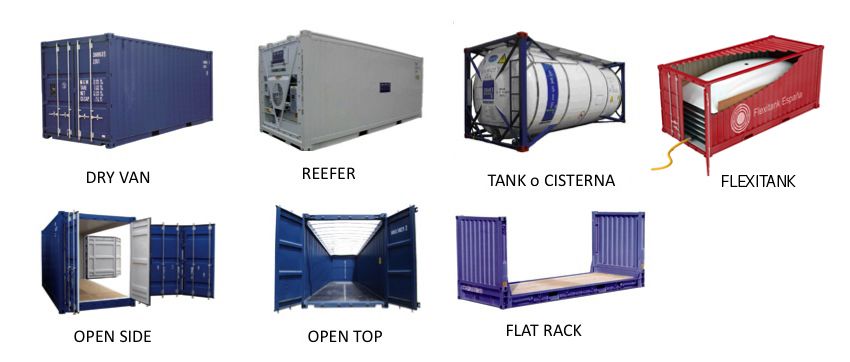Introduction
The glossary of ISO Standards containers serves as an essential resource for professionals in the field of container logistics. It offers a comprehensive understanding of key terms and concepts pivotal to the industry, ensuring clarity and uniformity in communication. This glossary is designed not only for those directly involved in container logistics but also for stakeholders seeking insight into the standards governing global trade and transportation.
Key Definitions
ISO Standards containers refer to freight or cargo containers that adhere to the specifications set by the International Organization for Standardization (ISO), ensuring consistency, safety, and efficiency in global logistics. Among the crucial terms, “Container dimensions” and “Load capacity” stand out as foundational knowledge for understanding container specifications. These dimensions and capacities are critical for optimizing cargo handling and transportation, reflecting the ISO’s commitment to standardization.
Another essential term is “Container specification”, which encompasses the design and structural requirements a container must meet, including its dimensions, material, and strength. “ISO certification” indicates that a container or a company complies with international quality and safety standards, enhancing trust among global trading partners.
Industry Standards
The ISO’s role in container logistics cannot be overstated. It provides a framework for “Standardization process” that facilitates international trade. ISO standards, such as ISO 6346, which governs container coding, marking, and identification, are pivotal. These standards ensure that containers used in “Intermodal transport”—moving goods via ship, rail, and truck—meet universal safety and quality benchmarks. Compliance with these standards is not just about adhering to regulations; it’s about ensuring efficiency, “Cargo security”, and “Container safety” across the global supply chain.
Container Types
Understanding the various “Container types” is essential for optimizing logistics operations. Standard containers, often referred to as dry vans, are the most common and are used for a wide range of cargo. “Refrigerated ISO” containers, or reefers, are specialized for transporting perishable goods, maintaining specific temperatures throughout transit. “Bulk containers” are designed for loose cargo that doesn’t require packaging. Each type has its own set of “Container specifications”, including dimensions and load capacity, tailored to its specific cargo handling and transportation needs.
| Mode of Transport | Container Type | Standard Dimensions |
|---|---|---|
| Ship | TEU | 20ft x 8ft x 8.5ft |
| Rail | FEU | 40ft x 8ft x 8.5ft |
| Truck | TEU or FEU | 20ft or 40ft x 8ft x 8.5ft |
Measurement and Dimensions
The “Measurement and Dimensions” of ISO Standards containers are critical for ensuring that containers can be efficiently stacked, transported, and stored. Standard containers typically come in lengths of 20 or 40 feet, with specific height and width measurements. These dimensions are crucial for maximizing “Load capacity” while adhering to transportation and storage regulations worldwide. Understanding the exact measurements helps in planning and optimizing “Cargo handling” operations, making it possible to forecast the number of containers that can be accommodated on a vessel or in a storage facility.
Certification and Compliance
“Certification and Compliance” with ISO standards signify a container’s adherence to international safety and quality benchmarks. Achieving “ISO certification” involves rigorous inspections and testing to ensure that containers meet specific “Container specifications”. This certification is not just about the container’s physical attributes but also about its suitability for “Intermodal transport”, ensuring that it can withstand various modes of transportation without compromising the cargo’s integrity. Compliance reinforces “Cargo security” and “Container safety”, fostering trust across the global supply chain.
Transportation and Handling
The effective “Transportation and Handling” of ISO Standards containers hinges on a thorough understanding of logistics operations. Containers are designed for seamless movement across “Intermodal transport” networks, including sea, rail, and road. Efficient handling practices are essential for minimizing delays and damage, ensuring that cargo reaches its destination in pristine condition. Key considerations include the use of appropriate lifting equipment, adherence to “Container specifications” for stacking and storage, and the implementation of security measures to prevent tampering or theft during transit.
Safety and Security
“Safety and Security” in the context of ISO Standards containers encompasses a set of protocols and measures designed to protect the cargo, container, and individuals involved in its transport and handling. Adherence to “Container safety” protocols ensures that containers are structurally sound and free from defects that could pose risks during transportation. “Cargo security” measures, on the other hand, are put in place to prevent unauthorized access and protect the cargo from theft or tampering. Implementing security seals and locks, conducting regular inspections, and adhering to international security standards are all critical practices within this domain.
Innovations and Trends
The field of container logistics is continually evolving, with “Innovations and Trends” shaping the future of how goods are transported and handled globally. Recent advancements include the development of smart containers equipped with IoT sensors for real-time tracking and monitoring of “Container specifications” such as location, temperature, and humidity. Additionally, the adoption of green technologies in “Refrigerated ISO” containers and efforts towards achieving greater “Sustainability” in logistics operations reflect the industry’s commitment to environmental stewardship. These innovations not only enhance “Cargo security” and efficiency but also drive the industry towards a more sustainable and technologically advanced future.
Conclusion
In conclusion, this glossary serves as a comprehensive resource for understanding the critical aspects of ISO Standards containers. From “Measurement and Dimensions” to the latest “Innovations and Trends”, the information provided offers valuable insights into the complexities of container logistics. As the industry continues to evolve, staying informed about these key areas will enable professionals to navigate the challenges of global trade more effectively. Encouraging further exploration of the topic, this glossary aims to contribute to the ongoing education and advancement of individuals within the container logistics sector.

